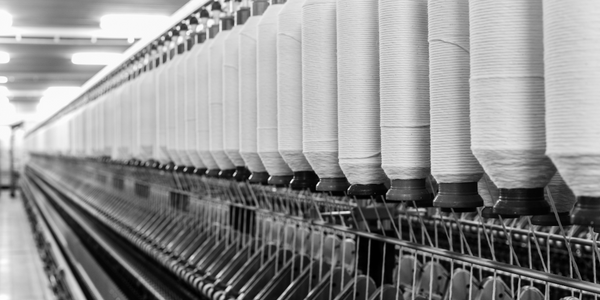技术
- 功能应用 - 库存管理系统
- 平台即服务 (PaaS) - 应用开发平台
适用行业
- 服装
- 零售
适用功能
- 物流运输
- 仓库和库存管理
用例
- 需求计划与预测
- 数字孪生
关于客户
该客户是一家总部位于美国的跨国运动服装和鞋类品牌。他们的产品线包括跑步鞋、篮球鞋、棒球鞋、滑板鞋、日常鞋和服装鞋。该公司业务遍及全球,并在瞬息万变的市场中运营。该公司使用自主开发的解决方案和 Excel 进行需求和供应规划,这导致交货时间长和手动工具分散,从而影响了预测准确性和填充率。
挑战
这家跨国运动服装和鞋类品牌拥有全球影响力,但由于市场瞬息万变、交货时间长和手动工具分散,因此面临着挑战。这些因素阻碍了预测的准确性和填充率。该公司正在努力应对耗时的手动需求预测流程,该流程无法跟上市场趋势或有效塑造需求。此外,缺乏有效和高效的原材料汇总采购规划,导致交货时间过长,并且对不断变化的需求做出反应的灵活性较低。供需匹配的过程复杂且耗时,并且没有最大限度地提高响应市场波动的能力或根据需求位置快速重新平衡库存。
解决方案
该公司与 o9 合作,对他们的需求和供应规划进行数字化改造。他们利用 o9 的机器学习分析来纳入和分析需求驱动因素并执行基于属性的规划,从而提高了全球市场上的季前和季中产品的预测准确性。该公司还利用 o9 的材料采购计划、场景建模和预构建计算来与供应商有效协作并变得更加敏捷。此外,借助 o9 的供应链求解器引擎,该公司创建了网络的数字孪生,并通过在正确的时间将库存和产能部署到正确的地点,快速实现对需求的敏捷响应。利用 o9 企业知识图来构建市场、需求和供应知识模型,允许在单个集成平台上跨所有时间范围运行所有产品和 DC 的所有关键规划流程。
运营影响
数量效益

Case Study missing?
Start adding your own!
Register with your work email and create a new case study profile for your business.
相关案例.

Case Study
Fire Alarm System and Remote Monitoring Sytem
Fire alarm systems are essential in providing an early warning in the event of fire. They help to save lives and protect property whilst also fulfilling the needs of insurance companies and government departments.Fire alarm systems typically consist of several inter-linked components, such as smoke detectors, heat detector, carbon monoxide, manual call points, sounders, alarm and buzzer. The fire alarm system should give immediate information in order to prevent the fire spread and protect live and property.To get maximum protection a shoe manufacturer in Indonesia opted for a new fire alarm system to monitor 13 production sites spread over 160 hectars. Although the company had an existing fire alarm system, it could not be monitored remotely.It was essential that the new system would be able to be monitored from a central control room. It needed to be able to connect to the existing smoke detector and manual call point. Information should be easily collected and passed on to the Supervisory Control and Data Acquisition (SCADA) system. Furthermore, the system should have several features such as alarm management, auto reporting, being connected to many client computers without additional cost, and run 24/7 without fails. The company also needed a system which could be implemented without changing the architecture of the existing fire alarm system.

Case Study
IoT Applications and Upgrades in Textile Plant
At any given time, the textile company’s manufacturing facility has up to 2,000 textile carts in use. These carts are pushed from room to room, carrying materials or semi-finished products. Previously, a paper with a hand-written description was attached to each cart. This traditional method of processing made product tracking extremely difficult. Additionally, making sure that every cart of materials or semi-finished products went to its correct processing work station was also a problem. Therefore, the company desired an intelligent solution for tracking assets at their factories. They also wanted a solution that would help them collect process data so they could improve their manufacturing efficiency.

Case Study
Improving Production Line Efficiency with Ethernet Micro RTU Controller
Moxa was asked to provide a connectivity solution for one of the world's leading cosmetics companies. This multinational corporation, with retail presence in 130 countries, 23 global braches, and over 66,000 employees, sought to improve the efficiency of their production process by migrating from manual monitoring to an automatic productivity monitoring system. The production line was being monitored by ABB Real-TPI, a factory information system that offers data collection and analysis to improve plant efficiency. Due to software limitations, the customer needed an OPC server and a corresponding I/O solution to collect data from additional sensor devices for the Real-TPI system. The goal is to enable the factory information system to more thoroughly collect data from every corner of the production line. This will improve its ability to measure Overall Equipment Effectiveness (OEE) and translate into increased production efficiencies. System Requirements • Instant status updates while still consuming minimal bandwidth to relieve strain on limited factory networks • Interoperable with ABB Real-TPI • Small form factor appropriate for deployment where space is scarce • Remote software management and configuration to simplify operations

Case Study
Digital Retail Security Solutions
Sennco wanted to help its retail customers increase sales and profits by developing an innovative alarm system as opposed to conventional connected alarms that are permanently tethered to display products. These traditional security systems were cumbersome and intrusive to the customer shopping experience. Additionally, they provided no useful data or analytics.

Case Study
How Sirqul’s IoT Platform is Crafting Carrefour’s New In-Store Experiences
Carrefour Taiwan’s goal is to be completely digital by end of 2018. Out-dated manual methods for analysis and assumptions limited Carrefour’s ability to change the customer experience and were void of real-time decision-making capabilities. Rather than relying solely on sales data, assumptions, and disparate systems, Carrefour Taiwan’s CEO led an initiative to find a connected IoT solution that could give the team the ability to make real-time changes and more informed decisions. Prior to implementing, Carrefour struggled to address their conversion rates and did not have the proper insights into the customer decision-making process nor how to make an immediate impact without losing customer confidence.








